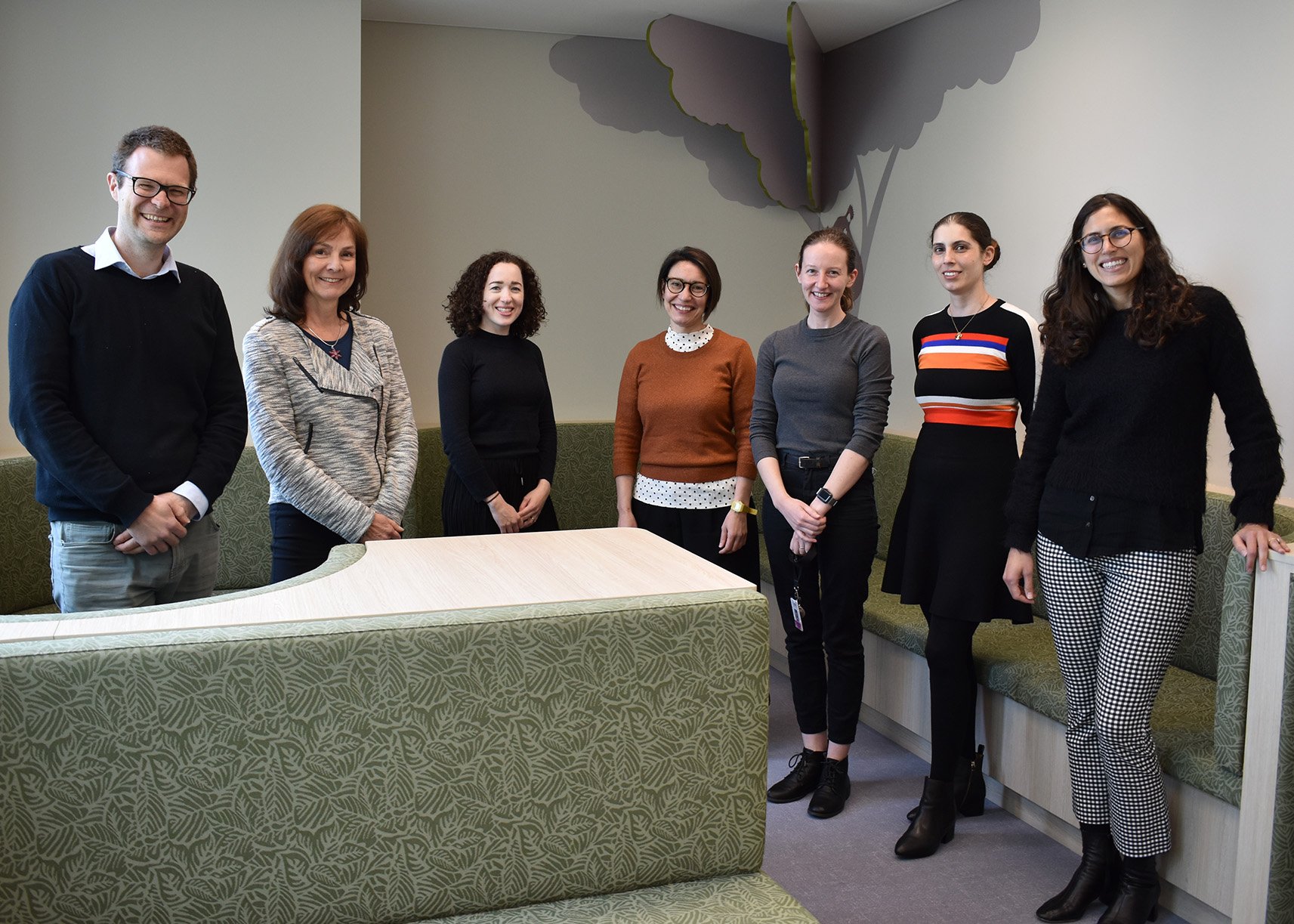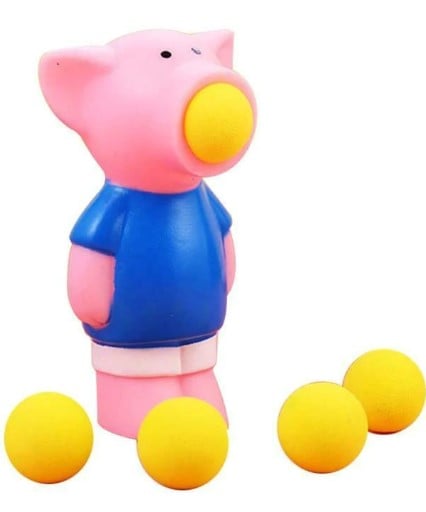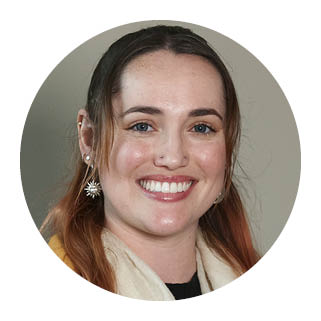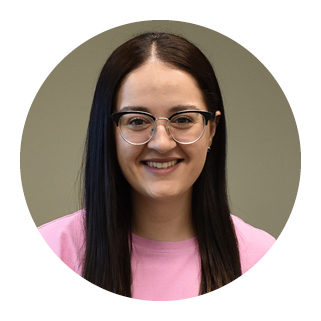Communication tools
For Speech Pathology Week, we asked our speech pathologists to share their favourite resource/s and how they like to use it.

CliniKids speech pathologists, left to right: Andrew, Theresa, Sally, Marisa, Sarah, Claire and Aria.
ARIA: My number one resource is the important people in a child’s life. There are so many ways we can connect and support communication using ourselves – we can imitate a child’s facial expressions, actions, sounds/words, or behaviours and respond to them with interest. Responding with interest shows kids we value what they have to say, and they are more likely to communicate again. Involving trusted people like mum, dad, friends, and education staff is so important. Plus, people are always on hand! No need to cart special toys around and people are available to children in a range of different environments.
SALLY: Many children are visual learners and benefit from using a visual schedule at different parts of the day or even within an activity. Visual schedules show a child what is happening using pictures. Visual schedules can meet our children’s need for structure and predictability and support smooth transitions between activities at home, school and in the community.
MARISA: My favourite resource is my client and their interests. When I follow their interests, we have the best fun and they take play and conversation in new and exciting directions.
SARAH: My favourite resource is our video cameras. Video feedback is such a powerful tool for parents and speech pathologists to use to support communication. Communication can be quick as lightning, and video helps us reflect on communication, and what supports our kids need to feel like powerful communicators and understood by others.
CLAIRE : One of my favourite resources are our pig poppers. They are lots of fun for everyone and create opportunities for supporting language using routines and anticipation. This supports our kids to take the lead in play, making them feel confident, in control and heard by communication partners.
: One of my favourite resources are our pig poppers. They are lots of fun for everyone and create opportunities for supporting language using routines and anticipation. This supports our kids to take the lead in play, making them feel confident, in control and heard by communication partners.
ANDREW: Other speechies. I’ve never met another speechie that I couldn’t learn from.
THERESA: One of my favourite resources has often been the bits and bobs that the kids bring into therapy with them. I remember doing weeks of therapy using a little boy’s love of electrical extension cords. He always arrived with one, and we never failed to find a way to integrate it into what we were doing that day. I remember a little girl who loved tissues, and we found so many ways to incorporate tissues into our time together.
 EMMA: My favourite communication tool ever has to be the use of total communication. Total communication involves the using a combination of body language, gestures, sign, speech, facial expressions, vocalisations, and/or a communication device to get your message across to someone – children are naturally incredible communicators and learn from a young age how to communicate using a total communication approach (with whatever communication tools they can currently access or use). Teaching families and other important people in the child’s life how to read these sometimes subtle cues opens up a world of understanding and opportunity for connection!
EMMA: My favourite communication tool ever has to be the use of total communication. Total communication involves the using a combination of body language, gestures, sign, speech, facial expressions, vocalisations, and/or a communication device to get your message across to someone – children are naturally incredible communicators and learn from a young age how to communicate using a total communication approach (with whatever communication tools they can currently access or use). Teaching families and other important people in the child’s life how to read these sometimes subtle cues opens up a world of understanding and opportunity for connection!
 LINDA: Visual communication boards are something that I always have handy within my sessions. They are a great introduction to AAC (Augmentative and Alternative Communication) with picture symbols to represent core words, such as ‘help, ‘more’ and ‘finish’, that can be modelled across activities and routines.
LINDA: Visual communication boards are something that I always have handy within my sessions. They are a great introduction to AAC (Augmentative and Alternative Communication) with picture symbols to represent core words, such as ‘help, ‘more’ and ‘finish’, that can be modelled across activities and routines.
To find out about speech pathology services at CliniKids, click here.
First published Monday 22 August 2022.